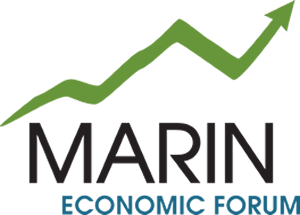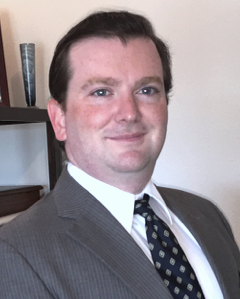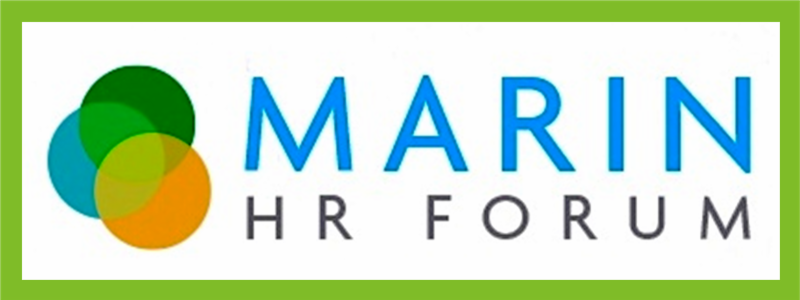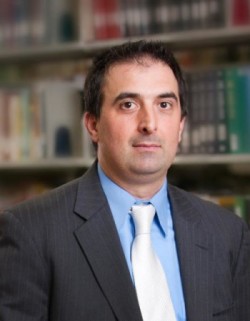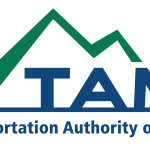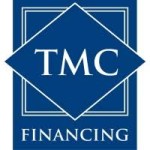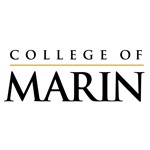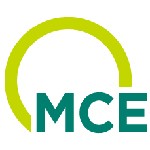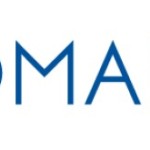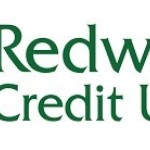Sync or Swim Blog Series #1

Spotlighting the Best Marinnovations™ in Education
By Michael Leifer, CEO Guerilla PR / Ecodads
Continuation next month
Back in 2012, California State Superintendent of Instruction Tom Torlakson decreed, “Technology is changing nearly every aspect of our lives. But in California-home to Silicon Valley and the world’s leading technology companies-many schools have been all but left out of the technology revolution. If we’re serious about providing our students a world-class education, we need a plan that leaves no school and no child offline.”
It’s taken quite some time, and a lot of friction-filled evolution, for the public school system to integrate technology into the classroom, but the EduTech mandate has finally arrived in Marin and become a reality. Every school in the County either offers Wifi and/or has a computer lab or a cart of tablets. That’s quite remarkable when compared to the fact that only 1/3 of all public schools in California have Wifi.
But, let me put this into more of a visceral parent perspective…
Last year, in September, my wife (a High School English teacher in Marin), and I attended the Sir Francis Drake High School Back to School Night excited to meet our daughter’s new teachers, to sit with fellow parents in her classroom cohorts, and to find out what she was going to learn during the year.
However, to our surprise, the teachers spent over 50% of the evening discussing the new Learning Management System. All teachers and students were to now use this digital engine as their ONLY assignment center, homework delivery mechanism, the place for giving and getting grades, to receive feedback and where ALL projects would be posted.
So, rather than clarifying the new common core curriculum standards, arcs, themes, and experiential projects that the students would be undertaking, the educators explained the user interface windows, the features and functionalities, providing an overview of the various platform modules, and how this digital-locker interfaced with other tools like YouTube, Google Docs, Microsoft Office and much more.
This twist of expectations had caused many parental attendees to glaze over at the projection screen, while others reacted more overtly with fear-based platitudes over this apparent whirlwind shift from the days of pen, paper and the ability to say, “The labradoodle ate my homework.”
And, amongst this growing din, one parent at our table remarked discerningly, “Guess it’s time for them to either Sync or Swim their way to college.”
Over the past year it’s made me think: do students, parents, tutors and teachers have the best practices, training or tools to easily sync with this transition? Marin has quite an amazing talent pool of technologists, programmers and start-up businesses. And, with Dominican University graduating teachers right in our backyard, along with the Marin Educational Office of Technology, it seems there may be some phenomenal resources. But, how many are offering innovative ways to easily plug-in and sync with education? For students after school? For parents to aid? And, why aren’t people in my circles talking about them? Plus, what schools are using which resources and devices, and how are they working and being assessed?
These questions lead me down a discovery pathway to want to identify, conduct interviews with, and write articles about the most revolutionary Marin EduTech companies, non-profits, clubs, associations and participants, as well as the social impact and benefits that they are trying to create for Marin. I look forward to sharing with you what I learn from this exploration across future issues of this MEF Newsletter.
===================
Michael Leifer
Cultural Anthropologist & CEO
guerilla PR, Inc.
mobile: 213.725.3037
[addtoany]
What to Watch: September
 |
Marinnovation 2015
An Annual Celebration of Entrepreneurs, Designers and Innovators in Marin |

Dr. Robert Eyler
Chief Economist
Marin Economic Forum
|

Dr. Milton Chen
Senior Fellow and ED, Emeritus
George Lucas Educational Foundation (GLEF)
|

Peter Poutiatine
School Selection, Sr. Coordinator
|
|
Event Details Tuesday September 15, 2015
4:30 – 7:30pm
Location: 1650 Los Gamos Dr.
San Rafael
Cost: No fee to attend or exhibit Complimentary food and beverages
Door Prizes!
|
Introduction of New CEO
It is with great excitement that I begin my tenure as CEO of the Marin Economic Forum (MEF). I am honored to join an organization with the reputation of MEF, and I look forward to contributing to the economic vitality of Marin County.
MEF Forms Working Partnership with the Marin HR Forum: Creative Solutions to HR Challenges Facing Marin Employers
By Edna Nakamoto, SPHR
Board Member Marin HR Forum,
Founder, The HR Manager LLC
A thriving economy means more jobs and a strong reliance on talent or employees to contribute to business growth. In Marin County, employers face unique challenges of attracting and retaining top talent because of our location, demographics and the lack of local affordable housing. Even more challenging is the fact that Marin residents often find it more desirable to commute to neighboring counties for work.
In keeping with Marin Economic Forum’s (MEF) goal to create partnerships and initiatives that stimulate job and business growth for entrepreneurial businesses within Marin County, MEF has formed a working partnership with the Marin HR Forum. The goal of this partnership is to facilitate conversations between business leaders and HR professionals so together, we can better understand the issues of today and tomorrow and find creative solutions to human resources challenges that face Marin County employers.
What to Watch: August
 |
Marinnovation 2015
An Annual Celebration of Entrepreneurs, Designers and Innovators in Marin |

Dr. Robert Eyler
Chief Economist
Marin Economic Forum
|

Dr. Milton Chen
Senior Fellow and ED, Emeritus
George Lucas Educational Foundation (GLEF)
|

Peter Poutiatine
School Selection, Sr. Coordinator
|
|
Event Details Tuesday September 15, 2015
4:30 – 7:30pm
Location: 1650 Los Gamos Dr.
San Rafael
Cost: No fee to attend or exhibit Complimentary food and beverages
Door Prizes!
|
Napa Earthquake One Year on and the Economics of Readiness
On August 24, 2014, Napa County experienced a natural disaster that no part of California wants to ever experience: an earthquake that affects the downtown area. The City of Napa was hit particularly hard, and the visual damage provided some reminders of a similar outcome 108 years earlier from San Francisco northward. Among the many differences between the 1906 earthquake and the 2014 earthquake in this region was that Napa was ready for this and the community rallied with its support and with its recognition that Napa’s visual aesthetic is very important to its main industry: tourism.
Marin County can learn from the speed and agility with which Napa County rallied. By November 2014, Napa had turned many corners in terms of the financial issues of recovery from the earthquake; to walk around in Napa and not know what happened there otherwise had the feel of major construction work and not reacting to a natural disaster. Because tourism is a major economic driver for Napa County and the City of Napa in specific, clearing the streets and confirming the safety of each business was critical in the economic effects of the quake not lingering beyond the necessary items.
MEF Unveils Marin Business Emergency Readiness (M’BER) Program
By Garry Lion, MEF Executive Committee, Marin Disaster Council, Mill Valley Vice Mayor
The Marin Business Emergency Readiness (M’BER for short, pronounced em-ber) program is designed to help Marin County businesses (for-profit or not-for-profit) to better prepare for, respond to and recover from emergencies/disasters (e.g., fires, floods, earthquakes, terrorist attacks, pandemics, etc.). It was developed in conjunction with the Marin Disaster Council (aka Marin DC3) to improve disaster preparedness in the local business community. This program is intended to benefit the ~12,000 payroll employers (with ~110,000 employees) as well as the ~38,000 sole proprietorships in Marin.
A number of disaster studies have concluded that a significant percentage of small businesses impacted by a natural or man-made disaster cannot stay open after the disaster and eventually fail. Those that have planned ahead for potential disasters, however, have a higher rate of staying open to serve their customers and employees after the disaster and of eventually surviving. The M’BER program helps businesses think through the important steps in preparing for the types of disaster to which they are most vulnerable and then build a customized Emergency Plan to ensure their continuity of operations and long-term survival.
The M’BER program starts with an assessment of a business’ vulnerabilities and an evaluation of steps already taken to protect it. This is accomplished through an American Red Cross (ARC) website called Ready Ratingwhich provides a numerical readiness score and suggests what further steps should be done. Working with their local em
What to Watch: July
With its creative population, Marin County is a place for innovation, design and entrepreneurship. Marinnovation highlights Marin’s vibrant, Creative culture and showcases technologies and ventures developing right here, right now. Marinnovation is an event where Marin County businesses show off their new ideas and cutting edge technologies.
|
Event Details Tuesday September 15, 2015
4:30 – 7:30pm
Location: San Rafael
Cost: No fee to attend or exhibit Complimentary food and beverages
Door Prizes!
|
